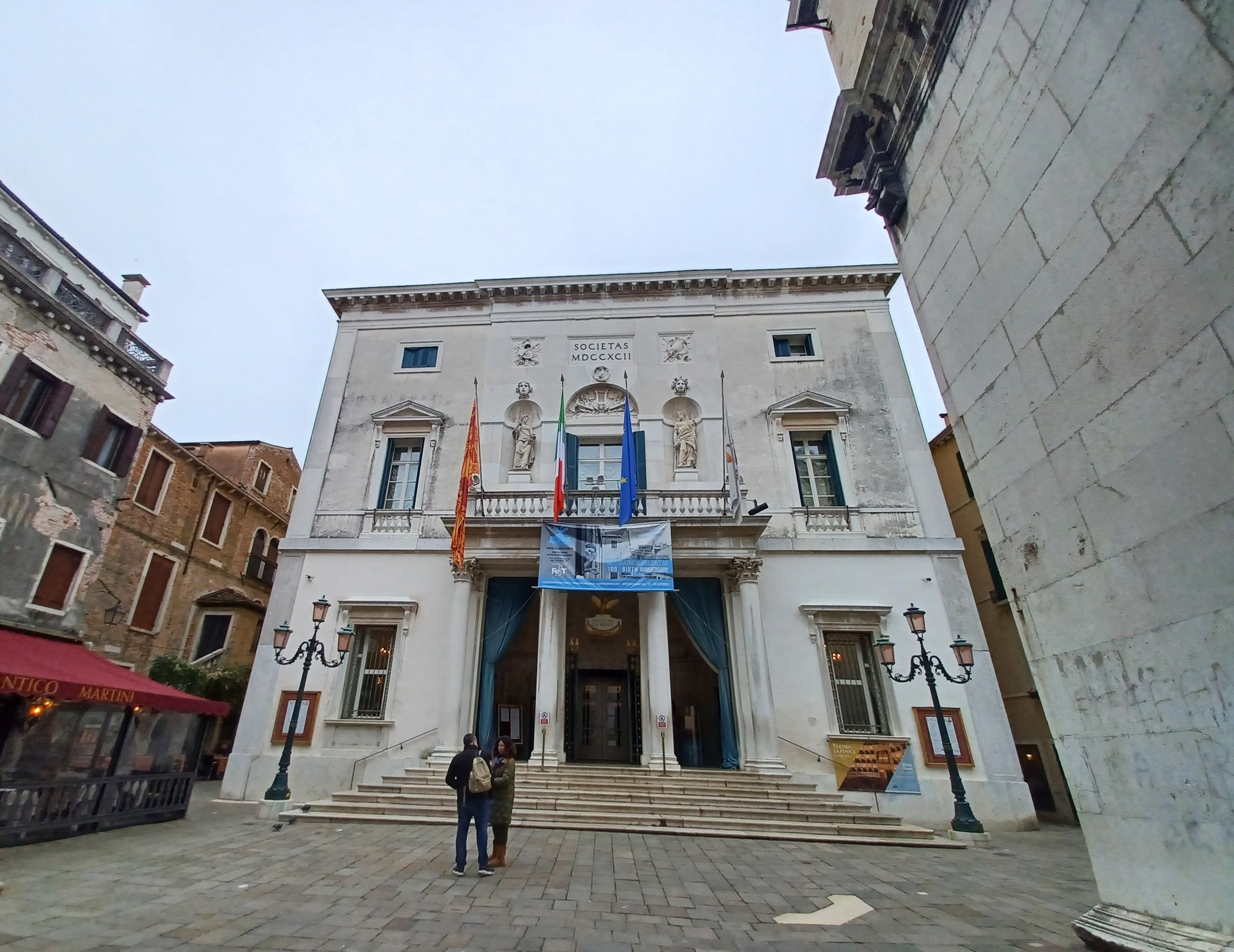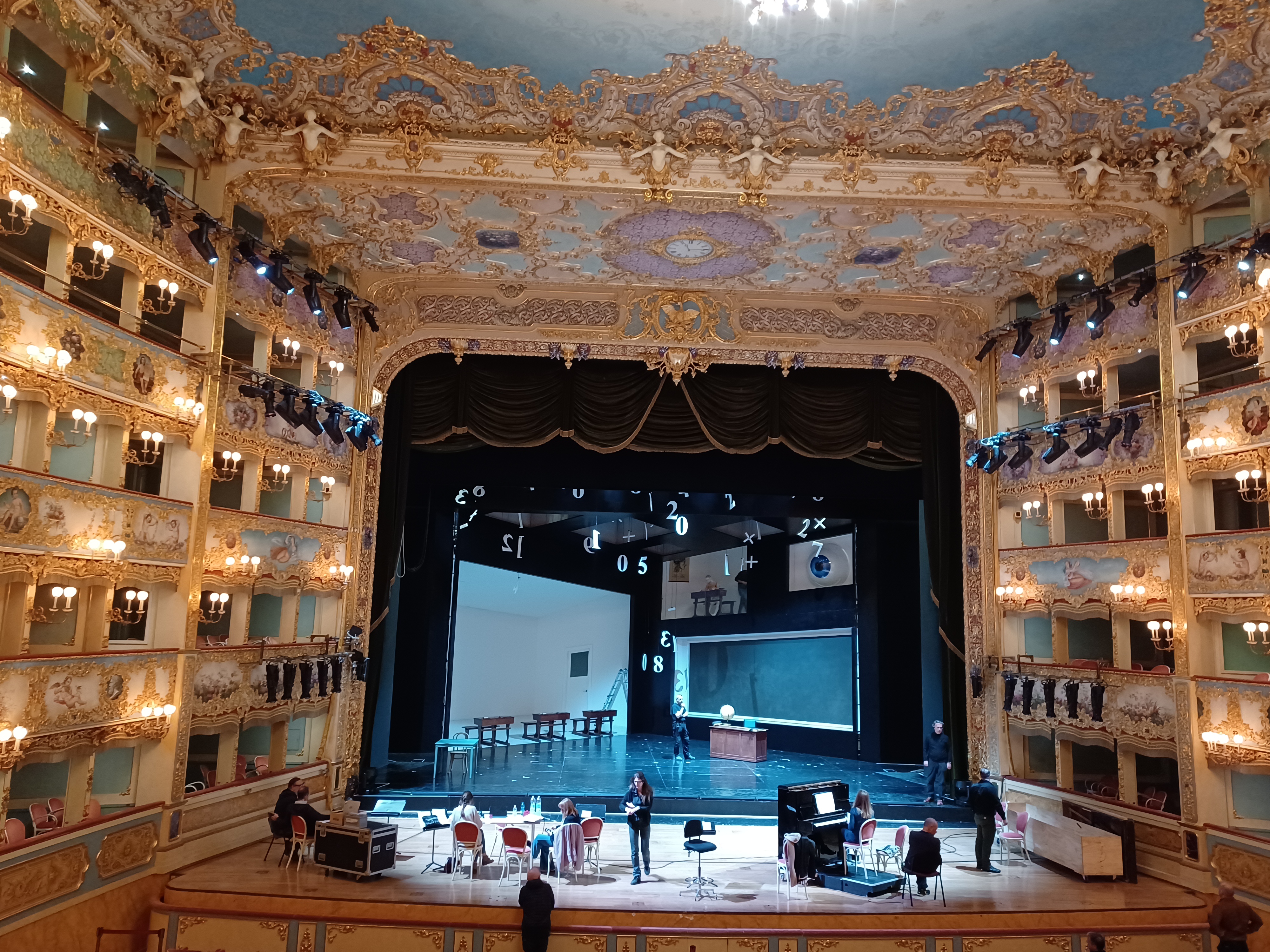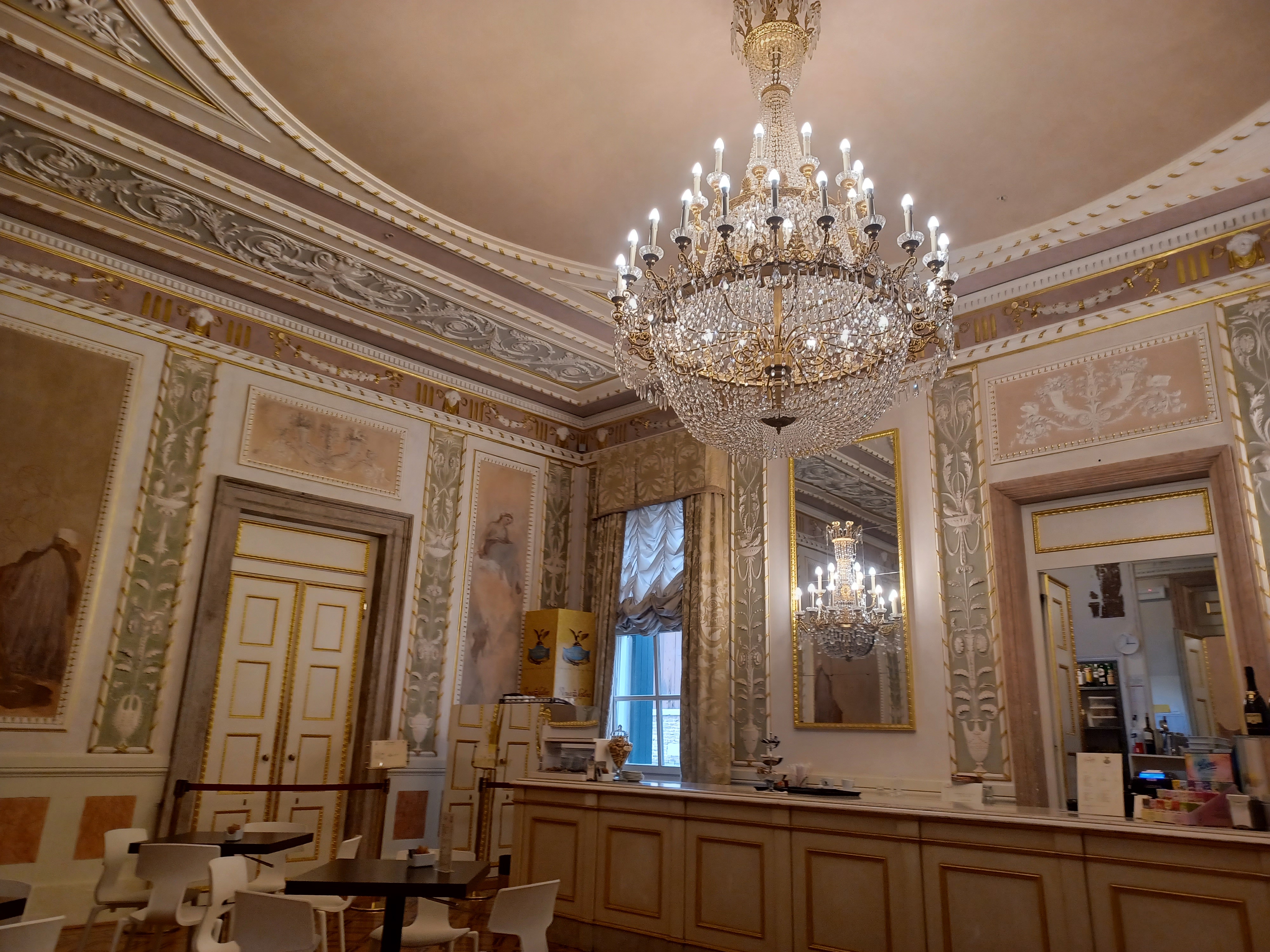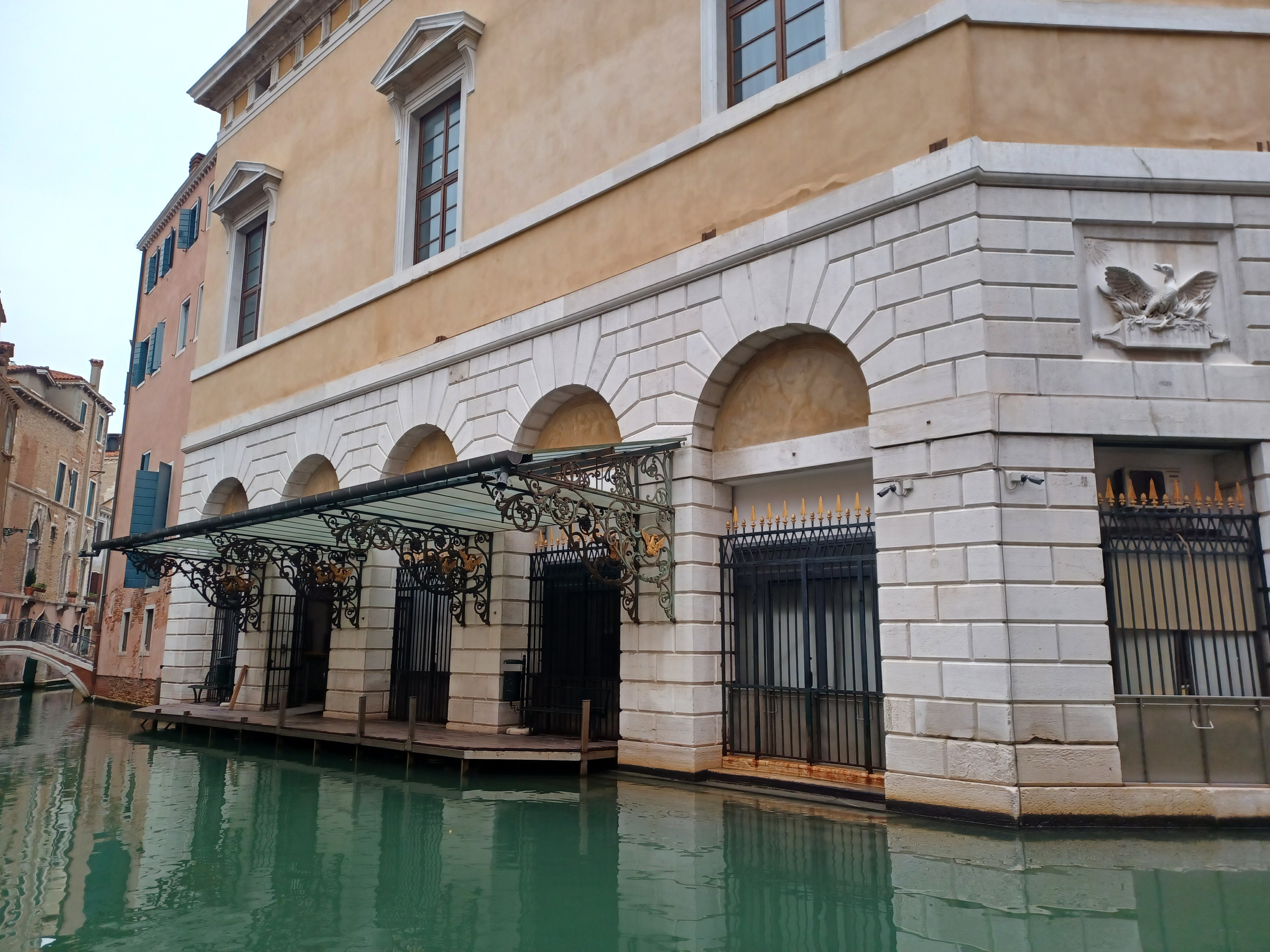Before leaving for our visit to Venice in November I said I’d like to see inside La Fenice on this holida as we’ve walked past the famous opera house in Venice many times but never been inside so my husband booked tickets online for an audio tour. Teatro La Fenice is one of the top opera and classical music destinations in the world; it’s located in campo San Fantin in the San Marco sestiere, Even if we could afford tickets to a performance at La Fenice there has never been a production taking place during our visits, although I suppose if we were really keen opera goers we would book our holidays to coincide with a performance.
Built between 1790 and 1792 La Fenice was designed by the architect Giannantonio Salva whose design was chosen from a number submitted to a panel of judges (we saw the wooden model made by Salva as part of his submission during our tour of the building). I think La Fenice (Phoenix) was its name from the beginning, before the fire in 1836, following which it was restored with an adaptation of the original design. After World War 2 Venice became an international tourist destination nd singers including Maria Callas, Joan Sutherland and later Pavarotti all performed at La Fenice along with famous conductors like Stravinski, Karajan and Bernstein. Then in 1996 another fire destroyed the theatre completely and it was not reopened to the public until the end of 2003. During our visit we saw an exhibition devoted to Maria Callas on one of the floors of the theatre.
We picked up our tickets at the start of the tour but, being November, we could have purchased the tickets on the day without any problem as there are fewer tourists at the end of the year. We had to leave a passport at the ticket office as deposit for our audio guides and then set off on our tour. I listened diligently to the recording at the appropriate locations but have now forgotten most of the information; there was a technical rehearsal taking place on stage we were not able to enter the auditorium on the ground floor but instead climbed one of the impressive staircases to see the ‘Imperial’ Box. Inside the walls were covered in mirrors and the intricate mouldings gilded, the ceiling beautifully painted and there was a good view of the stage so we were delighted to be able to see a rehearsal of an internation production of the Tales of Hoffmann taking place – the pianist running though short pieces of music, a few notes being sung while technical crew members manipulated scenery, including a huge eye, while numbers and mathematical symbols individually strung from above bobbed up and down. Meanwhile those of us in the splended Box juggled for the best positions to see what was going on and to admire the opulence of our surroundings – the beautiful painted ceilings and walls, the stucco, gilding and Murano chandeliers, 4 of 5 tiers of small private boxes, all with pale turquoise painted dividing walls and intricate gilded reliefs accentuated by many electric lights, mainly in twos and threes, on sconces between most of the boxes. The seats in the auditorium are set out according to the production but there are generally over 1,000 seats in all.athough I’ve read that there are many restricted view seats in some of the boxes.
Next our audio guide directed us to a room that led into the Sala Dante, now the bar/cafe, these two rooms had been partly restored – those parts of frescoes that had survived the most recent fire had been left and the parts lost had been outlined to indicate what had been there and other decorations were in slightly different colours, making it obvious which were original and which were restored. Unfortunately the ballroom was closed to us while a group of Italian students were having a lecture there so we took the opportunity to sit in the almost empty bar and enjoy a glass of wine and a Venetian tramezzino each. There was one last room on this floor to admire before we made our way down the staircase again, hand in our audio headphones and head outside to search for the entrance from the canal that we had seen on the model of the theatre. We walked round the back of the building and across a bridge so we had a good view of the once important way of arriving at La Fenice – by gondola.
We had spent well over two hours inside and enjoyed the visit; it was definitely worth the equivalent of 9 Euros each (senior rate) that we’d paid in sterling when booking from home.. . . .












